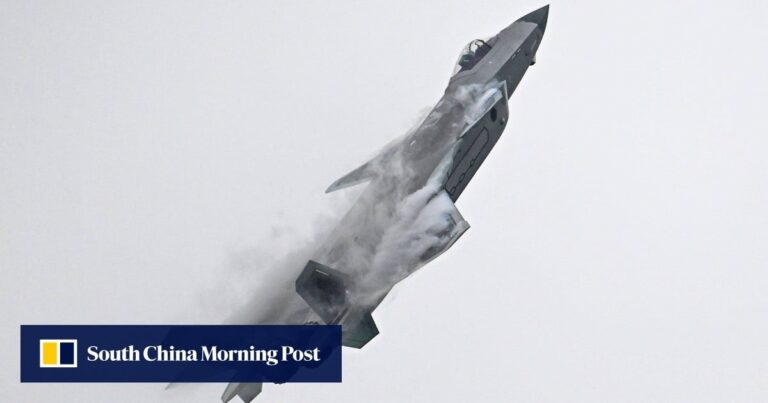However, immediately after the drone separates, the fighter jet experiences vibrations because its aerodynamic profile has changed significantly due to the sudden reduction in wing area and shift in center of gravity.
Du Xin, a senior engineer at the China Aerodynamics Research and Development Center’s (CARDC) Institute of Aerospace Technology, which is under U.S. sanctions, said the successful test flight proves a “new concept” for the Chinese air force’s next-generation fighter jet.
“This represents an advanced mode of manned-unmanned joint combat in which multiple aircraft with different capabilities are integrated and fly in coordination,” Du and his colleagues wrote in a peer-reviewed paper published May 29 in the Chinese journal Advances in Aeronautical Science and Engineering.
“This can effectively address issues such as speed mismatch and range incompatibility between manned and unmanned aircraft and achieve complementary advantages.”

The J-20 is currently China’s most capable stealth fighter, and the Chinese air force is testing a two-seater version that allows one pilot to focus on engaging drones.
However, most drones are limited in that they cannot match the speed and range of manned fighter jets.
Yang said China’s next-generation fighter jet will be characterized by its unexpected shape-changing ability.
“Future aircraft may be like Transformers in science fiction movies,” Yang told state broadcaster CCTV in 2020.
In 2022, he said, “We will see the J-30 and J-40 (successors to the J-20) in the near future.”
The idea of flying a combination of different aircraft is not new.
Sadly, during a test flight on April 24, 1953, an F-84 fighter attached to the wingtip of a B-29 bomber flipped upside down and crashed into the ground, killing the fighter pilot and all five members of the bomber crew.
But rather than fixing the aircraft to the wingtips, Du’s team used what’s known as a rear-end docking layout.
“The main wing is connected to the leading edges of the two secondary wings via retractable separation mechanisms at the trailing edge of the main wing,” the researchers wrote in their paper.
This layout improves the aircraft’s stability in flight, but “the host’s center of gravity and focal point can change dramatically before and after separation, posing significant challenges to the development of control laws.”
In their paper, Du’s team presents a new algorithm that can accurately analyze various disturbances, such as wind changes, that occur during separation.
Both the jet and the drone use the FCC-100 flight control computer, developed by Northwestern Polytechnic Institute, which can perform complex calculations quickly and provide reliable control instructions.
The project team is also employing high-performance components such as a fast-responding rudder, which can carry out computer commands instantly.
“During separation, the combined aircraft overcomes significant airflow turbulence and achieves safe and smooth separation of the main and auxiliary aircraft, and the entire process is controllable,” Du’s team wrote.
“It is ready for operational deployment,” they added. The date of the test flight remains classified.

“We’ve already built and flown a full-scale flight demonstrator in the real world, and we’ve broken records in doing so,” Will Roper, a former undersecretary of the Air Force for Acquisition, Technology and Logistics, told Defense News in 2020.
“We are ready to build the next generation of aircraft in ways never before seen,” he added, without giving further details about the aircraft.
But senior Air Force officials recently said the NGAD program is not going as smoothly as planned.
Some American military experts believe the U.S. military may abandon development of a new generation of fighter jets in the coming years and instead focus on upgrading its existing fleet of F-22s and F-35s.


